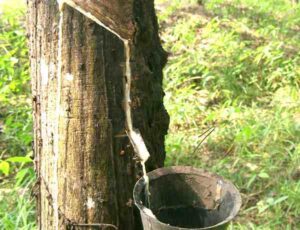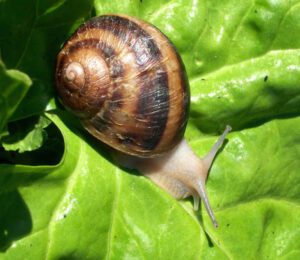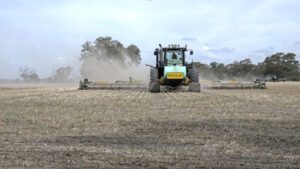Commercial spirulina farming is becoming popular day by day in many countries around the world. It is a very easy and simple business and you can earn money easily from this business. Spirulina is a blue-green algae or biomass of cyanobacteria that can by consumed by animals and also by humans. Arthrospira platensis, A. fusiformis, and A. maxima are the three species of spirulina. Currently, spirulina is cultivated throughout the world and it is used as whole food or as a dietary supplement. Sometimes, spirulina is also used in aquaculture, poultry and aquarium as feed supplement.
People are doing spirulina farming from the ancient time. Aztecs and other Mesoamericans used spirulina as a food source until the sixteenth century. The main advantage of commercial spirulina farming for food farming is that, ‘it needs less water and land than many other livestock for producing energy and protein’. Spirulina is a very good source of protein and energy. Dried spirulina contains 60% protein, 24% carbohydrates, 8% fat and about 5% water.
A 100 grams spirulina supplies 290 kilocalories and is a rich source of numerous essential nutrients. It is especially rich in protein, niacin, B vitamins. It is also a good source of essential dietary minerals such as iron and manganese.[1]
Spirulina can be grown in both salt water and fresh water. You can even start your spirulina farming in controlled environments at your home. You can even keep spirulina at your home mainly because of it’s toxin absorbing property. However, you can start commercial spirulina farming for making money. Here we are trying to describe everything related to this business.
Uses of Spirulina
Spirulina is mainly used in the manufacture of several medicines and cosmetics. It is a blue-green algae that can by consumed by both animals and humans.

Advantages of Spirulina Farming Business
Like many other agribusiness, commercial spirulina farming has numerous benefits/advantages. Top advantages of commercial spirulina farming business are;
- If you compare with other commercial farming business, then it is very easy to start and maintain spirulina farming.
- Starting commercial spirulina farming relatively require less investment and you can start this business with little money.
- Spirulina is one of the super foods which is used as food and also used for preparing medicine.
- Commercial production of spirulina is not harmful for the environment.
- Spirulina requires relatively less time for harvesting.
- Most of the spirulinas multiply very quickly. They can grow by 25% of it’s own weight every day.
- Market demand of spirulina is very good and it’s increasing gradually.
- Commercial spirulina farming is very profitable, and it can be a very good income source for the people. Especially, commercial spirulina farming can be a good income source of the educated but unemployed people.
Requirements For Spirulina Farming
Commercial production of spirulina can be done in the places with tropical as well as subtropical climates. Commercial production requires adequate sunshine throughout the year. And the production also depends on some other factors such as wind, rain, radiation from sun and variations in temperature. 30°C to 35°C is the ideal temperature for optimum protein content as well as higher rate of spirulina production. Spirulina can not survive under 20°C temperature, culture bleaching occurs when the temperature is higher than 35°C. Proper balance of chemicals and specific minerals is a very important part of spirulina production.
Ideal pH levels for commercial spirulina farming is between 8 and 11. Light play a vital role in spirulina production, and it affects the availability of protein content, rate of growth and pigment synthesis. Light concentration between 20K and 30K lux is considered optimum. And spirulina farming under yellow, red, white and green light gives out maximum protein content in the yield.
Maintaining standard quality of water throughout the cultivation cycle is very important. And standard water quality can be maintained by getting a restrained salt water solution. The pH levels must range between 8 and 11. You can maintain adequate water level in a controlled manner. Average water level should be around 25 cm. And higher water levels in the tank can lead to difficulty in photosynthesis and algae development.
How To Start Spirulina Farming Business?
Starting commercial spirulina is very easy and simple. Here we are trying to describe more information about starting and operating a successful spirulina farming business.
Site Selection
Starting home level spirulina production is just like keeping some fish in an aquarium. But growing spirulina is much more easier than keeping fish in aquarium. You can start your spirulina farming in your indoor/pools/basins/outdoor tanks and even in your aquarium tanks. Actually, the size of your area/land depends on your plan. If you want to produce spirulina commercially, then select large tanks or ponds. But smaller tanks or aquarium will be enough for small production.
Starting a small scale organic spirulina farming requires a cement or plastic tank, which gets adequate amount of sunlight. And with adequate amount of sunshine, it will take minimum 10-15 days time for the spirulina to develop.
Required Nutrients
Spirulina farming generally require a high dosage of organic nutrients. And bacterial count can be more as they tend to fed on such nutrients (the final produce might not contain bacteria as most of the producers use pasteurization, irradiation and fumigation processes). The major component for commercial spirulina farming is nitrogen. And nitrogen helps in the formation of protein. Compost tea and certain manures are the natural fertilizers used for commercial spirulina farming business.
Spirulina Production
Add around 30 grams of spirulina for every 10 liters of water for better growth. You can use live concentrated spirulina for seeding the pond. Commercial spirulina farming requires one separate pond for growing spirulina as seed. This will reduce the need for regular purchase of seeds, and you can even sell the seeds to other farmers. After stocking the spirulina seeds, they will start to multiply within the next 3 to 5 days. Check the amount of nutrients regularly and add fresh water at regular intervals for better production and quality of produce.
Mature spirulina changes it’s color from light to dark green. Concentration levels of algae and it’s color determines the harvesting time for the produce. Another important factor for commercial spirulina farming business is ‘contamination’. Any type of breeding of insects, foreign algae and chemical contamination can lead to lesser production.
Total production of spirulina will be less if there is a presence of chlorine in the water available. Along with this, existence of larva in the water will lead to lesser production and contamination.
Harvesting
Harvesting the algae at proper time is very important for commercial spirulina farming. Concentration of .5 gram per liter of water is the best possible algae concentration for its harvest to begin. And after harvesting first time, the same production can be achieved within a time frame of 10 days once the seeding phase is over. The algae is passed through a simple filter and collected once they are collected from the tank. Then they need to be cleansed with water. Cleansing of the algae is done once the water passing through the filter becomes fully transparent. Then the algae is passed upon large weights after the filtration is over to further reduce the moisture.
Further processing of the algae includes machines that make thin strips and the same are kept in the sun for further drying. And next phase includes grounding (that makes powder), which is later checked for edibility in the laboratories.
Yield
It’s very tough to tell the exact amount. It can vary from place to place. And the number also depends on numerous factors.
These are the steps and ways for operating a successful spirulina farming business. Hope this guide has helped you! Good luck and may God bless you!







An excellent and detailed guide on Spirulina Farming! The blog does a fantastic job explaining everything from the benefits to the requirements and steps involved in starting a commercial spirulina farm. It’s great to see such comprehensive information, especially on site selection, nutrients, and harvesting methods, which are crucial for success in this industry. If you’re interested in learning more or need professional guidance on spirulina cultivation and farming solutions, feel free to check out our website at Green Bubble Algal Works for similar insights and expert support.
https://www.spirulinafarming.com/